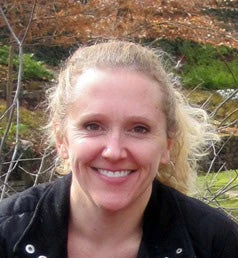In the last week alone, we reviewed two studies that assessed gender inequality by comparing outcomes between female- and male-headed households. This was surprising to us, as it seems an outdated approach. We thought it would be worthwhile to make some observations about why comparing female- and male-headed households tells us very little (if anything) about gender gaps, at least in Africa (if not everywhere). There is more than enough here to argue against comparing households with male and female heads to capture differences in male and female well-being or gender equality.
Maybe the most obvious reason not to study gender (in)equality by comparing households by the gender of their heads stems from the fact that many women live in male-headed households, and this includes many women who are deprived in specific ways. In the latest DHS for 77 countries, on average one quarter of households are headed by a woman, but there’s a lot of variation across countries. The rate of female headship ranges from less than 2% in Afghanistan to 45% in Haiti. Barring very heavily skewed male/female population ratios, women can’t mostly be residing in female-headed households. Indeed, a lot are living in male-headed households. In Cote d’Ivoire, where about 20% of households are headed by a woman, about 70% of women (15 and older) reside in male-headed households. Similar rates are found in Ethiopia, Rwanda, and Tanzania. On the other hand, far fewer men live in female-headed households in these countries (around 10%). Also, men are rarely the spouse of the household head (arguably alleviating concerns of varying social norms across countries in regards to gender and assigning headship). So unlike for women, male headship captures socio-economic conditions for the vast majority of men.
Why is it problematic to ascribe differences between male- and female-headed households as an indicator for gender (in)equality when two thirds of women reside in the former? Because it assumes that resources are shared equally among members in households. This might not be a problem for indicators like dwelling characteristics (which arguably do not vary across household members), but it is a problem for household measures of consumption and income which get divided up among members (and poverty measures derived from them). For example, a recent paper finds that a majority of Africa’s nutritionally deprived women and children are not found in poor households as conventionally defined. For over 25 years, the unitary model of households in economics has been questioned (see this paper, just one of many examples). We still struggle with measuring well-being within households. Chapter 5 in the World Bank Poverty and Shared Prosperity (PSPR) report from 2018 discusses the existing literature and new methods to measure intrahousehold differences in resource allocation, both from a monetary and non-monetary perspective.
A second problem lies in the heterogeneity in marital status among female-headed households. In sub-Saharan Africa, for example, over 80% of male heads are married. Among those who are not, most have not yet married. On the other hand, the women who head households are much more heterogenous with respect to marital status than men. In Africa, widows make up the largest segment of female heads (about 45%). Divorced women are about 20% and the never married are about 10%. And close to a quarter of the women who are female heads in the region are actually married with a non-resident husband. The husband has either migrated or is non-resident in a polygamous marriage. Implicit in comparing female- and male-headed households to judge gender gaps is the assumption that the former have no or weak links to male-owned or controlled incomes and resources. This is unlikely the case for women who are household heads and have husbands living elsewhere, with their potential income from remittances and access to other resources via their husbands. Consistent with this, in Africa female heads who are married have lower poverty rates than female heads who are not married. Rather than focus on sex of the household head, it would be better to focus on the specific attributes of the head that make some female-headed households poorer (such as widowhood) or wealthier (migrant husbands).
A third problem to be aware of in the way male- and female-headed households are being compared relates to how we measure the economic welfare of people. The use of per capita consumption/income in making poverty comparisons between female- and male-headed households ignores economies of scale in consumption. Female-headed households have, on average, a different demographic composition to their male peers. Specifically, they are smaller and have higher dependency ratios. This raises concerns about whether findings based on per capita income or consumption are robust to different assumptions about scale economies and adult equivalence. Globally, female-headed households are on average less poor using a per capita measure (see the above PRSP) and this is true in Africa also where there is a growing share of female-headed households happening alongside falling poverty rates (see this paper). But controlling for household size (to allow for economies of scale), female headship is associated with significantly lower consumption for all but one of the 9 countries examined from Africa (look for the paper out soon!). And allowing for even modest economies of scale in consumption can result in a reversal in the poverty comparison, as this work finds for East and Central Africa. Current measurement practices may not even be reliable for telling us whether female-headed households are in fact poorer.
We need to go beyond simple male- and female- headship comparisons, and toward a richer typology of households, taking account of marital status, demographics (such as here), income sources, and (as much as possible) individual well-being.



Join the Conversation